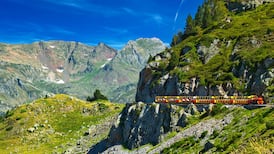There is something delightful about visiting so-called second-tier cities in Europe. First, they are smaller – think Toulouse or Montpelier in France, or Genoa and Verona in Italy, or even Bruges in Belgium.
Of course, smaller doesn’t always mean less touristy but it does mean that you get your bearings very quickly and you will often find yourself wandering down the same streets again, picking up on little details that you missed the first time. And second, these more provincial cities are often friendlier and more easy-going as locals too appreciate living in an urban environment that is less overwhelming than larger cities.
We booked flights to Bilbao in northern Spain for early September with the firm intention of taking a bus to Pamplona to start five days of walking along the Camino. But, following a family bereavement, we decided we didn’t want to stay in different places each night and instead opted to explore the Basque city of Bilbao and its near neighbour (some say rival) San Sebastián, the coastal city that claims to have Europe’s most iconic city beach.
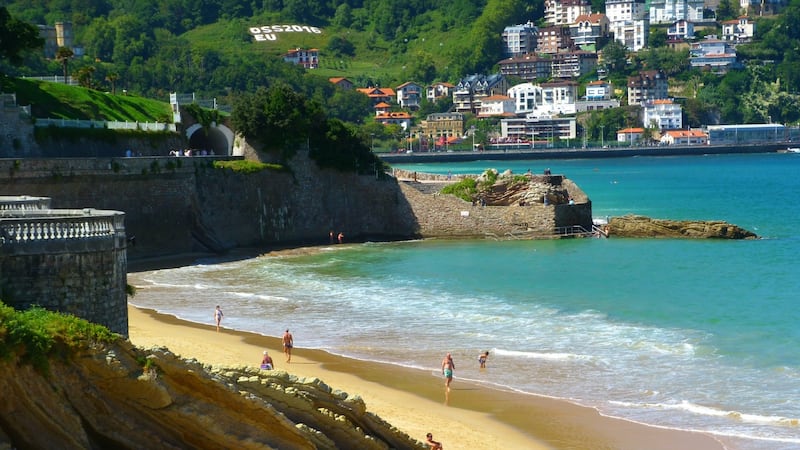
The A3247 Bizkaibus from Bilbao Airport brings you right into the heart of Bilbao in 15-20 minutes for €3, so there’s no need to take a taxi unless your accommodation isn’t close by. Once in the city, you can explore the Grand Via and its surrounding pedestrian shopping streets which radiate from the large rotund Plaza Moyua with its colourful floral displays.
READ MORE
But you will soon be drawn to explore the banks of the Nervion/Ibaizabel (most signs are in Spanish and Basque) river, which divides the old quarter (Casco Viejo) from the more commercial streets. We stayed on the banks of the river with a stunning view of the Arriaga Theatre, itself inspired by the Paris Opera House and one of the city’s most beautiful 19th-century buildings.
Take a stroll along the wide riverside walkway to the West and within 20-30 minutes you will arrive at the Guggenheim Museum. This architectural icon, designed by Canadian architect Frank Gehry in the late 1990s, is what has truly transformed Bilbao from a dilapidated former industrial port city to a cultural spot, savouring its newfound identity for designer shops, Michelin star cuisine and, yes, contemporary art.
First, stand in awe at the undulating exterior structure itself made from 35,000 sheets of titanium. Then, enjoy the outdoor sculptures – the giant floral puppy created by Jeff Koons, the Spider by Louise Bourgeois and mirrored surfaces of Tall Tree & The Eye by Anish Kapoor. Jeff Koon’s puppy, which is regularly replenished with fresh flowers, was created for the opening of the museum in 1997 but it was so adored that it has remained a permanent feature and a big tourist attraction in itself.
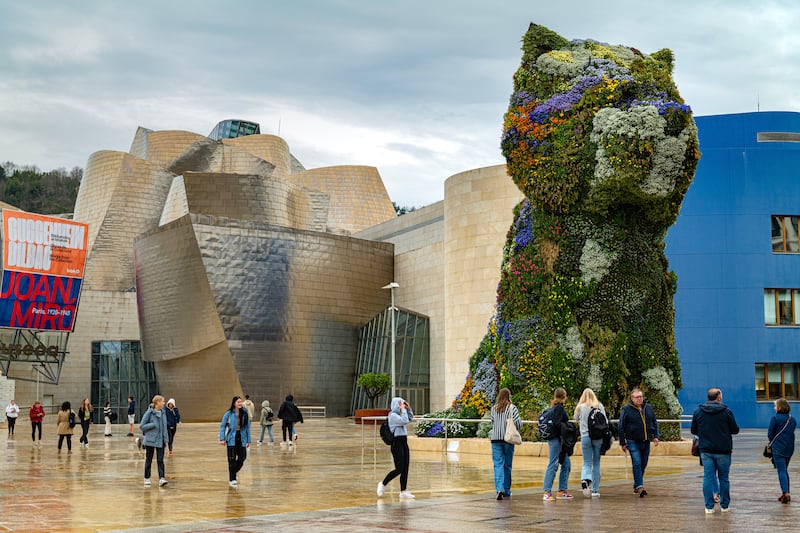
Once inside, The Matter of Time by the American sculptor Richard Serra is unmissable. A homage to engineering (in former times, Bilbao was the centre of the iron and steel industry in the Bay of Biscay and a big shipbuilding port), the gigantic floor-to-ceiling curved panels of weathered steel force you to interact with metal in a way you never thought possible.
The other floors of the Guggenheim have spaces dedicated to pop art, abstract expressionism, contemporary Spanish art and temporary exhibitions such as that by the Japanese artist Yoshitomo Nara. Back in the historic quarter, you will be spoilt for choice when it comes to pintxos. These gourmet snacks are the Basque version of tapas.
Originally a slice of bread with cheese, fish, vegetables on top held in place by a pintxo (cocktail stick), they have become much more elaborate and locals and visitors alike go from bar to bar in the early evening, enjoying everything from octopus to roasted peppers stuffed with crabmeat to tempura prawns, pork cheek, miniature beef burgers and much more.
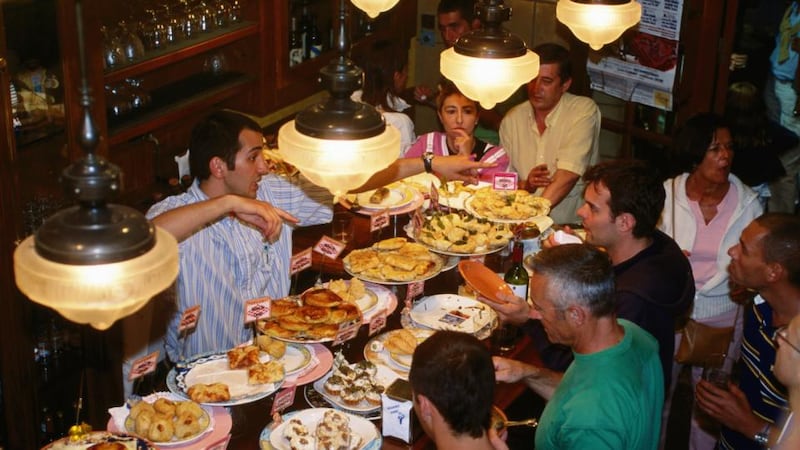
The arcaded 19th-century neoclassical square, Plaza Nueva – also a favourite spot among locals – is the most atmospheric place to eat and drink in the centre of Bilbao. We enjoyed a very tasty variety of pintxos at Sorginzulo, which has two bars on the square. Expect to pay between €3 for simpler cold pintxos (fried cheese or fish on slices of baguette) and up to €7 for delicacies such as pork cheek and octopus.
Bilbao is a city of bridges but there are three in particular that stand out. The Santiago Calatrava-designed bridge (similar to the Samuel Beckett bridge in Dublin) Zubizuri is a joy to cross at night when it is lit up. The La Salve bridge (Puente La Salve) just north of the Guggenheim offers magnificent views of the museum from a height. But the pièce de résistance is the Unesco World Heritage Site, the Bizkaia/Vizcaya bridge, which joins the Getxo quarter with Portugalete. This iron and steel structure, built in 1893, was the first bridge in the world to carry people and traffic.
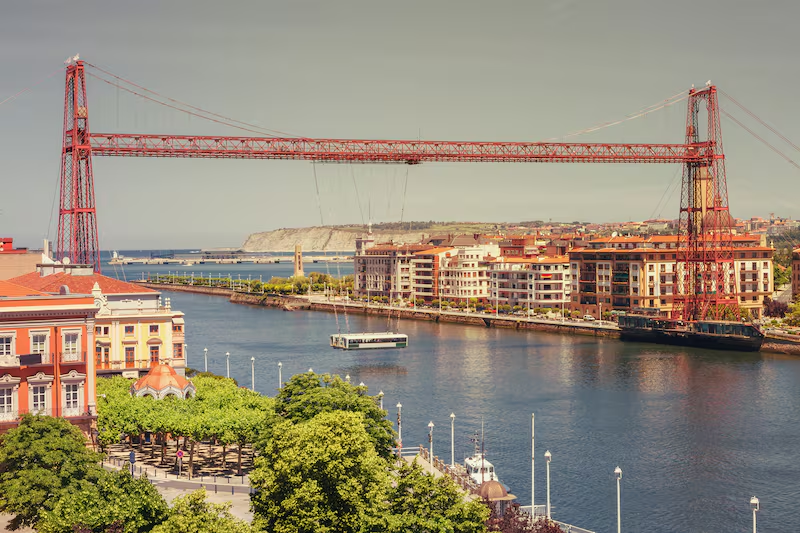
You can get a lift to the top to look back across the city or towards the port of Bilbao. Alternatively, you can cross in the hanging gondola, which carries 12 vehicles and 200 people suspended from the cross beam 160m above the water.
Arrive in Donostia-San Sebastian (to give it its full title) by bus and you’re within 15 minutes’ walk of the Cantabrian sea – the southern end of the Bay of Biscay on the edge of the Atlantic Ocean. The city is about 75 minutes by bus from Bilbao Intermodal bus station and the same distance by bus directly from Bilbao Airport. The river Urumea splits the city in two.
Its estuary also divides the coastal strip into the popular surfing beach of Zurriola to the east and La Concha and Ordaretta beaches to the west. We stayed in Gros, a residential area just behind Zurriola beach, filled with a great selection of bars and restaurants popular among locals and visitors alike. Surfing lessons are available for anyone who wishes to join the wetsuit-clad locals on the beach.
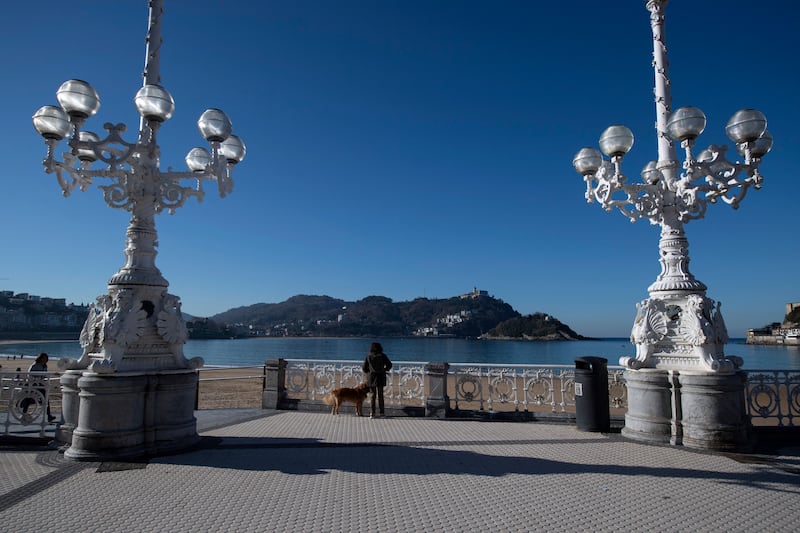
Cross over the Zurriola bridge and you will arrive in the old town – which, with its small boutiques, ice-cream parlours, bars serving tantalising pintxos and upmarket restaurants, is a mecca for both national and international tourists. Don’t forget to sample the burnt Basque cheesecake, which you can buy by the slice for €4.50 or a full cake for €25 in speciality shops if you don’t choose it for dessert in a restaurant.
Climb the steps beside the San Telmo museum (free entry on Tuesday) in Plaza Zuloago to make your way to the top for the best view across La Concha beach, St Clara island and Mount Urgull beyond. Walk right to the top to see the statue of Christ that looks down across the beach to the city beyond. Follow the route back down to the marina at the edge of the old town to walk the promenade right along La Concha beach for the full experience of San Sebastián. If you’re visiting with children, the Aquarium next to the marina is worth seeing.
Although we visited in September – and had a few rainy days before the sun came out – the sea was warm and the golden sands of La Concha beach were magnetic. Arrive early in the morning and you’ll see the daily effort put in to comb the beach of detritus and wash down the covered walkway under the promenade. And for just €2.50 for a shower (with towels provided) or €3.50 for a shower and locker, you can put your valuables away and have a warm shower after your swim. Walk to the western end of La Concha to pass through a tunnel to arrive at the calmer waters of Ordaretta beach.
From here, hardy swimmers can swim the 500m stretch to St Clara Island when the tide is out and the sea is calm. You can also take a boat trip around the bay for €7 and to the island for €4 from the marina from June to September. But those who prefer to stay on dry land can walk to the most westerly point of the bay to view the iron sculptures by Basque artist Eduardo Chillida, evocatively entitled the wind comb (Peine del Viento), which interact dramatically with the waves on this more remote side of the city.
San Sebastián, once called Little Paris due to the number of Belle Époque buildings with their art nouveau facades along grand boulevards, became fashionable when the Austrian-born Spanish Queen Regent Maria Christina took her summer holidays at the Miramar Palace overlooking La Concha beach following the death of her husband, King Alfonso XII. It soon became one of the go-to spots for European aristocrats as hotels were built to meet their needs.
Throughout the 20th century, San Sebastián continued to entice the smart set and, with its annual international film festival and jazz festival, its delicious food and stunning beach, it won’t be going out of fashion any time soon.
Pricier than Bilbao both for accommodation and eating out, San Sebastián is undoubtedly a more beautiful city to spend time in. But Bilbao is charming too and if you’re not a beach bunny and instead prefer to explore museums, seek out local bars and enjoy gourmet meals, it’s the better of the two to visit.






